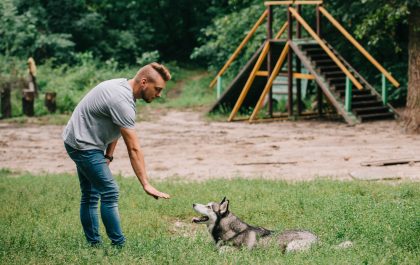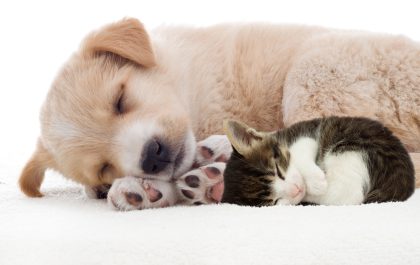Do you ever wonder why your cat behaves in certain ways? Have you ever been curious about what motivates your cat’s behaviour? If so, then this article on Cat Instincts Explained is for you! Here, you’ll discover the fascinating world of feline instincts and learn why cats act the way they do. From hunting to communication, you’ll gain insight into the natural behaviours of cats and how they interact with their environment. Read on and you’ll gain a deeper understanding of your beloved pet.
Hunting and Prey Drive
Hunting and prey drive are two of the most important instincts in cats. This instinct is what drives cats to hunt and catch their prey. It is also what keeps cats alert and attentive to their surroundings.
The prey drive is a natural instinct that cats possess, and it is an important part of their survival. Cats are naturally curious and will often investigate their environment. When they come across something that looks like prey, they will instinctively go into hunting mode. This involves stalking the prey, pouncing, and then killing or eating it. Cats also use their sense of smell to identify potential prey. This instinct helps cats to survive in the wild and is also beneficial for domestic cats. It helps to keep them active and alert, and it can provide them with mental stimulation.
Territorial behaviour
Territorial behaviour is a common instinct amongst cats, and is a key part of their natural behaviour. Cats are territorial by nature, and will often mark their territory by spraying, scratching, and rubbing their scent onto objects. This behaviour is usually seen when a new cat enters the household, as the resident cats will mark their territory to establish dominance. It is also seen when cats are taken to a new home, as they will attempt to mark their new territory in order to feel secure.
Territorial behaviour is also seen when cats are interacting with other cats. Cats will often fight over territory, and this behaviour can often be seen when cats are competing for food or resources. Cats will also use their scent to mark their territory, and this can be seen when cats rub their face and body against objects. This behaviour is a way for cats to communicate with each other, and to establish dominance. Territorial behaviour is an important part of a cat’s instinct, and understanding this behaviour can help owners to better understand their pet’s needs.
Communication and Body Language
Good communication between cats and their owners is essential for a healthy and happy relationship. It is important to understand the body language of cats in order to effectively communicate with them. Cats use a variety of body language cues to express their feelings and intentions, such as tail position, ear position, and facial expressions. A cat’s tail is one of the most important body language indicators, and can be used to show a variety of emotions. A tail held high is usually a sign of confidence and happiness, while a tail held low can indicate fear or aggression. Similarly, a cat’s ears can be used to communicate. Ears held back or flattened against the head may indicate fear or aggression, while ears held upright can indicate alertness or curiosity.
Facial expressions are also important in understanding a cat’s feelings. A cat’s eyes can be used to show a variety of emotions, such as fear, happiness, and aggression. A relaxed cat may have eyes that are slightly squinted, while an angry cat may have wide eyes. Cats also use their whiskers to communicate, and whiskers held outward can indicate curiosity or alertness. By understanding these body language cues, owners can better understand their cats and communicate with them more effectively.
Grooming and Hygiene
Grooming and hygiene are two instinctive behaviours cats display in order to maintain their health and wellbeing. Cats are naturally fastidious creatures and will spend several hours each day grooming themselves. They will use their tongue to clean their fur and whiskers, as well as their paws to clean their face and ears. Grooming is important for cats as it helps to keep their fur clean and free from parasites, and also helps to maintain their body temperature.
Hygiene is another important instinctive behaviour cats display. Cats are known for their cleanliness and will often use their paws to cover their waste in the litter tray. This behaviour is thought to be an instinctual way of keeping their environment clean and free from parasites and disease. Cats also have an instinctive aversion to dirty water, which helps them to avoid drinking contaminated water. By understanding these instinctive behaviours, owners can help to ensure their cats stay healthy and happy.
Play behaviour and Socialization
Play behaviour is an important part of cat instinct and socialization. Cats are naturally curious and playful animals, and they enjoy exploring their environment. Through play, cats learn to hunt, practice their stalking and pouncing skills, and interact with other cats. Play also helps cats to develop their social skills, as they learn to read body language and facial expressions. Cats also use play to bond with their owners, which helps to strengthen the bond between them.
Socialization is also an important part of cat instinct. Cats are social animals, and they need to interact with other cats and people in order to be content and healthy. Cats that are not socialized can become fearful and aggressive, which can lead to behavioural problems. Socialization is best done when kittens are young, as they are more open to new experiences. Socialization involves introducing cats to different people, animals, and environments in a positive and safe way. This helps cats to learn how to interact in a variety of situations and to feel comfortable in their environment. Socialization also helps cats to recognize their owners’ voices and facial expressions, which helps to strengthen the bond between them.
Climbing and Perching
Climbing is a natural instinct for cats, and they often use it to explore their environment. Cats are able to climb trees, walls, and other structures with ease due to their sharp claws and flexible bodies. Climbing can also be used as an escape route for cats in danger, or as a way to reach prey. Cats can also use their climbing skills to reach higher vantage points to observe their surroundings.
Perching is another instinctive behaviour in cats. Cats often use perching to observe their environment from a safe distance. Cats are able to balance on narrow ledges and other surfaces due to their sharp claws and flexible bodies. Perching also allows cats to avoid predators or other animals that may be in the area. Cats may also use perching as a way to find food or to survey their territory.
Nighttime Activity and Sleep Patterns
Cats are natural nocturnal hunters, meaning they are most active at night. In the wild, cats take advantage of the darkness to hunt for prey, but domestic cats have a different nighttime routine. Domestic cats tend to sleep for most of the night, with short bursts of activity. This is because cats are crepuscular, meaning they are most active during the twilight hours of dawn and dusk.
Cats typically sleep for around 16 hours a day, but this can vary depending on the individual. Older cats tend to sleep more, while kittens can sleep up to 20 hours a day. Cats also tend to have multiple sleep cycles throughout the day and night, with short bursts of activity in between. During these bursts of activity, cats may engage in playful behaviour, explore their environment, or hunt for prey. Cats also use these short periods of activity to groom themselves, which is an important part of their instinctual behaviour.
Maternal Instincts and Kitten Care
Maternal instincts are an important part of cat behaviour and are essential for the care of kittens. Cats are highly nurturing animals and will typically display maternal behaviours such as nursing, grooming, and protecting their young. When a female cat is expecting, she will often become more protective of her environment and will seek out a safe, comfortable space to give birth. Once the kittens are born, the mother cat will take on the role of caregiver and will provide them with food, warmth, and protection. She will also groom them regularly and teach them important survival skills such as hunting and defending themselves.
Kitten care is a critical part of a mother cat’s maternal instincts. She will typically spend the first few weeks of her kittens’ lives teaching them how to eat, groom themselves, and interact with other cats. She will also provide them with emotional support and will encourage them to explore their environment. As the kittens grow, the mother cat will begin to wean them off her milk and will gradually introduce them to solid foods. Once the kittens have reached a certain age, the mother cat will begin to spend less time with them and will eventually encourage them to go off on their own. This is an important part of a cat’s natural instincts and is essential for the successful care and development of her kittens.
Final Thoughts
Cats have a range of instinctive behaviours that can be observed in both wild and domestic cats. Understanding these instincts can help us to better understand our cats and provide them with the best possible care. From hunting and prey drive, to territorial behaviour, communication and body language, grooming and hygiene, play behaviour and socialization, climbing and perching, and maternal instincts and kitten care, cats have a variety of instinctive behaviours that make them unique and fascinating creatures. By understanding these instinctive behaviours, we can better understand our cats and provide them with the best possible care.




